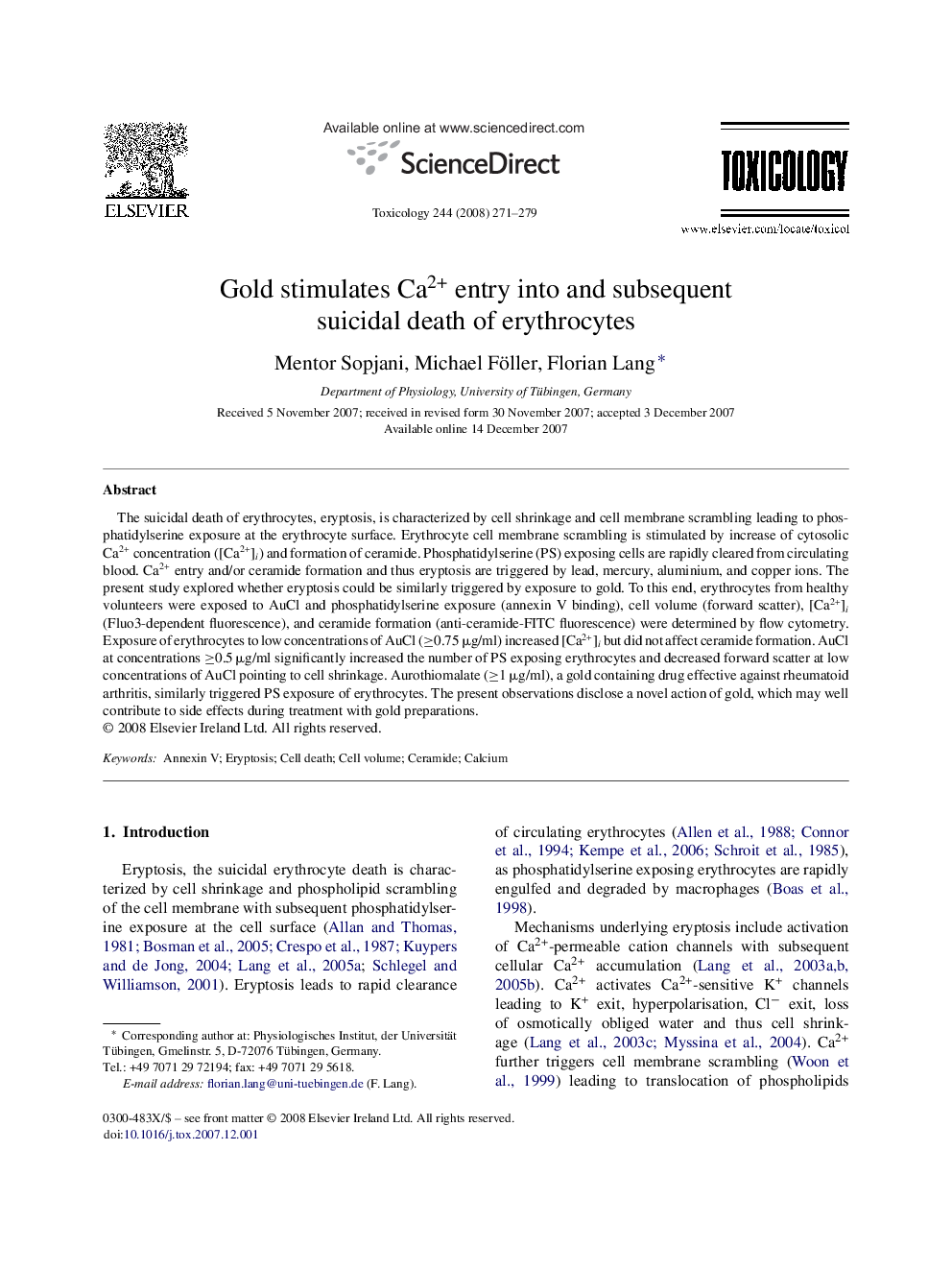| Article ID | Journal | Published Year | Pages | File Type |
|---|---|---|---|---|
| 2597113 | Toxicology | 2008 | 9 Pages |
The suicidal death of erythrocytes, eryptosis, is characterized by cell shrinkage and cell membrane scrambling leading to phosphatidylserine exposure at the erythrocyte surface. Erythrocyte cell membrane scrambling is stimulated by increase of cytosolic Ca2+ concentration ([Ca2+]i) and formation of ceramide. Phosphatidylserine (PS) exposing cells are rapidly cleared from circulating blood. Ca2+ entry and/or ceramide formation and thus eryptosis are triggered by lead, mercury, aluminium, and copper ions. The present study explored whether eryptosis could be similarly triggered by exposure to gold. To this end, erythrocytes from healthy volunteers were exposed to AuCl and phosphatidylserine exposure (annexin V binding), cell volume (forward scatter), [Ca2+]i (Fluo3-dependent fluorescence), and ceramide formation (anti-ceramide-FITC fluorescence) were determined by flow cytometry. Exposure of erythrocytes to low concentrations of AuCl (≥0.75 μg/ml) increased [Ca2+]i but did not affect ceramide formation. AuCl at concentrations ≥0.5 μg/ml significantly increased the number of PS exposing erythrocytes and decreased forward scatter at low concentrations of AuCl pointing to cell shrinkage. Aurothiomalate (≥1 μg/ml), a gold containing drug effective against rheumatoid arthritis, similarly triggered PS exposure of erythrocytes. The present observations disclose a novel action of gold, which may well contribute to side effects during treatment with gold preparations.
